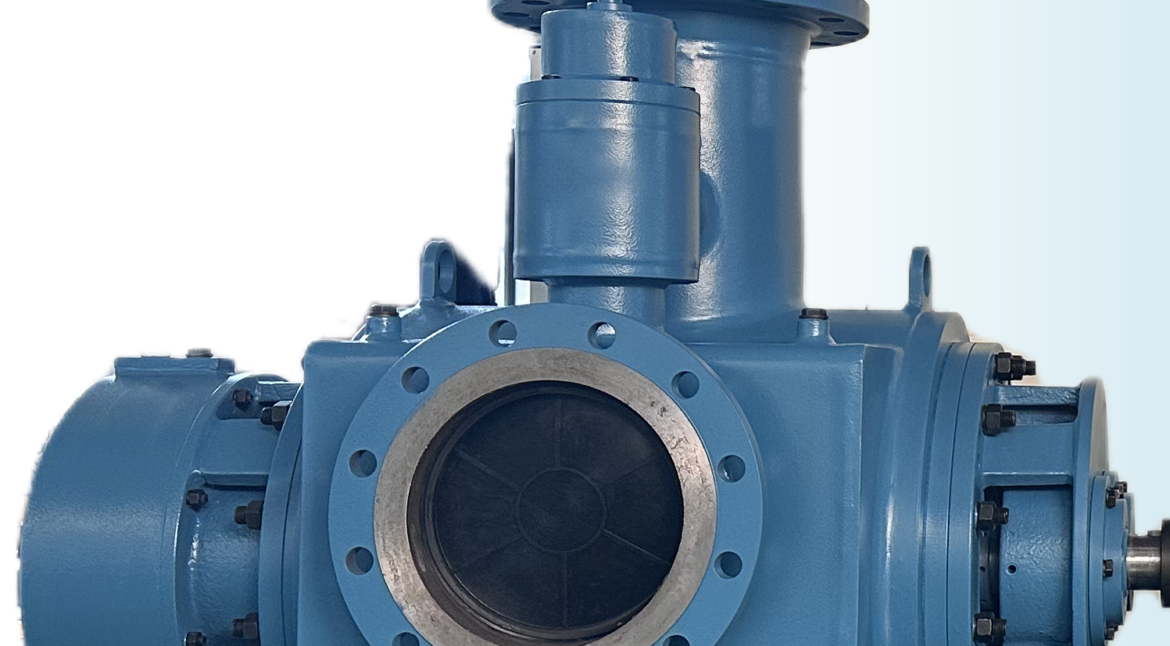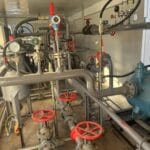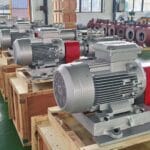In the complex network of industrial production, the transportation of fluid media is a crucial link. Different types of pumps are suitable for different working conditions, and twin screw pump exhibit unparalleled advantages in transporting specific media, helping customers achieve the production goals of energy saving and efficiency enhancement.
I. Viscosity Range of Media Suitable for Twin – Screw Pumps
Twin screw pump are excellent at transporting medium – to – high – viscosity media. Generally, when the kinematic viscosity of the medium is between 10 – 100,000 cSt (centistokes), twin – screw pumps can perform at their best. For example, common industrial greases such as lubricating oils and hydraulic oils usually have a kinematic viscosity of several tens to several hundreds of cSt at 40°C. Twin – screw pumps can handle them easily, ensuring the smooth transportation of greases between equipment and providing reliable lubrication for mechanical operation.
Another example is asphalt, a high – viscosity medium. Its kinematic viscosity can reach 300 – 600 cSt at 135°C, and the viscosity is even higher at room temperature. With its unique screw structure, when transporting asphalt, the twin – screw pump exerts a relatively gentle shearing force on the medium, without damaging the molecular structure of asphalt, thus ensuring the performance of asphalt remains unaffected and achieving efficient and stable transportation.
II. Advantages of Twin – Screw Pumps in Pressure Requirements
In transportation scenarios that require high pressure, twin – screw pumps also perform outstandingly. They can generate a high discharge pressure with a relatively small motor power to meet the needs of long – distance transportation or overcome system resistance. Usually, the discharge pressure of twin – screw pumps can reach 1.0 – 25 MPa, depending on the pump model and structural design.
Take the petrochemical industry as an example. In the process of transporting crude oil from storage tanks to refinery units, it is often necessary to overcome long pipeline distances and high system resistance, which puts forward high requirements for the discharge pressure of the pump. Twin – screw pumps can provide stable high – pressure output with low energy consumption, ensuring the continuity and stability of crude oil transportation. Compared with other types of pumps, when achieving the same discharge pressure, twin – screw pumps require a smaller motor power, thus effectively reducing energy consumption.
III. Principles of Twin – Screw Pumps to Achieve Energy Saving and Efficiency Enhancement
- Efficient Positive – Displacement Transportation
Twin – screw pumps belong to positive – displacement pumps. Their working principle is based on two meshing screws. During rotation, multiple sealed chambers are formed. As the screws rotate, the sealed chambers move from the suction end to the discharge end, thus realizing the transportation of the medium. This positive – displacement transportation method results in minimal leakage during the transportation process of twin – screw pumps. They can efficiently convert the energy input from the motor into the kinetic energy and pressure energy of the medium, reducing energy losses and improving the pump’s efficiency. - Optimized Screw Design
The screws of twin – screw pumps usually adopt a special helical profile design. This design enables the screws to rotate more smoothly, reducing energy losses caused by screw vibration and friction. At the same time, the meshing clearance between the screws is precisely controlled, which can not only ensure good sealing performance but also reduce the friction resistance between the screws, further improving the pump’s efficiency. - Good Self – Priming Ability
Twin – screw pumps have a certain self – priming ability, which means that when transporting the medium, they can suck the medium into the pump without additional priming operations. This self – priming ability not only simplifies the design and operation of the transportation system but also avoids potential energy waste during the priming process, improving the energy utilization efficiency of the entire transportation process.





2 Comments
Addison2482
Very good https://is.gd/tpjNyL
Alec1242
Very good https://is.gd/tpjNyL